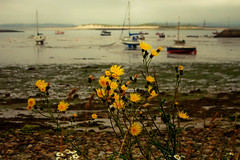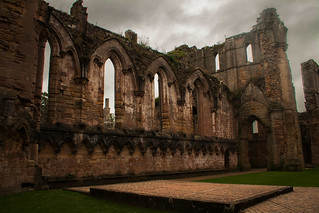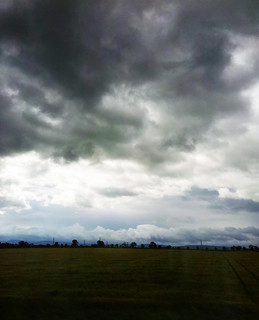
A rather long yet oddly compelling article appeared on the Guardian’s website on Friday, exploring the eeriness of the English countryside. The post explored the move by writers and artists towards an exploration of landscape, picking apart notions of ownership, heritage, and the rather nebulous concept of “belonging”. Robert Macfarlane, author of the piece, manages to name drop his own work alongside that of photographers, writers and musicians, and it is clear that he has a lot of passion for this new engagement with “the eerie”. He points out the tendency of humans to resort to the supernatural when faced with that which defies explanation, and he explains that “contemporary anxieties and dissents are here being reassembled and re-presented as spectres, shadows or monsters”.
So far, so good. Trouble is, he treats all of this as if it’s something new, something that only contemporary artists have been bothered to engage with on a larger level. True, he does point out that a lot of this “recent rise of the eerie coincides with a phase of severe environmental damage”, and these factors can’t be ignored. He looks at military infrastructure, capitalism, and even the state surveillance to which we’re all exposed as being factors in this resurgence of “the eerie”. Still, none of this is new. The Gothic has been dealing with these concerns since the eighteenth century. In fact, the eerie has a lot of crossover points with the sublime, an idea explored by Edmund Burke in 1757. The sublime is provoked by something magnificent, yet so magnificent that it causes fear, such as rugged landscapes that threaten to overwhelm the viewer, or dangerous cliffs. The sublime is beauty, but beauty that threatens with destruction. (Landscape and the Sublime by Philip Shaw for more on the sublime)

As well as the sublime, from its earliest years, the Gothic has dealt with landscape in a range of ways. The first novels located its castles and ancestral houses in gloomy forests, or on windswept moors, each location a symbol of isolation. Later forms of the Gothic moved their narratives into the urban environment, with the densely-packed cities of Dickens becoming soaked in fog, treacherous spaces that either concealed crime, or promoted it. As the Gothic has moved into the domestic space, so the wider public have regained their fascination with ruins, now bleached of their negative associations and repaired by the heritage industry, rehabilitated as symbols of our shared past. When the Gothic was born in 1764, the English countryside was already studded with the ruins of the Dissolution of the Monasteries, and served to remind viewers of the crushing power of the state. They were the symbol of the devastating passage of time, but now these ruins are the subject of ruinenlust, an attraction towards that which we fear, only we no longer fear them. Instead we’re proud of them, and proud of our long English history that produced them. We even have a charity named English Heritage, who care for over 400 historic sites, including 33 properties in Northumberland alone.

The past is a crucial element of the Gothic, and buried secrets that are uncovered by an engagement with Gothic landscapes becomes deeply important to return of the repressed. Macfarlane uses the phrase in passing during his article, and it essentially comes from Freud. The idea is an old one, but it is in Freud’s essay on The Uncanny in 1919 that it is given its more familiar form. While Freud relates everything back to sexuality, and sexual impulses, it boils down to a belief that in order to become an adult capable of functioning socially, excess beliefs and feelings are repressed. Within wider culture, this becomes all sorts of practices or ideas that are ‘swept under the rug’, so to speak, only to return at a later date. The process of repression naturally distorts the material undergoing repression, and it follows that it returns far darker, and more twisted, than it was in its original state. In horror fiction, this gives rise to monsters and spectres, each more vengeful than the last. In terms of landscape, this becomes bodies hidden in bogs, disused signs of industry left to decay before they claim lives through accidental discovery, or even the dangers associated with fracking.

I do agree that there has been a greater engagement with “the eerie”, but I don’t agree that it’s anything new. In 2012, the British Library hosted Writing Britain: Wastelands to Wonderlands, a fascinating exhibition that explored the relationship between British fiction and its landscape. Look at the wild moors of Wuthering Heights, and the “dark Satanic mills” of William Blake. The secularisation of English society, largely since the Second World War, has led the population to embrace the landscape in a different way, with the rural idyll of second homes in the country undercut by rising mortgages and falling successes in the agricultural industry. This “green and pleasant land” risks its biggest defilement yet if the HS2 rail link goes ahead, and who knows what kinds of monsters could be unleashed if we start fracking beneath our national parks.
One only needs to look to the Mines of Moria to find out what happens when you dig too far and too deep.






Have your say!